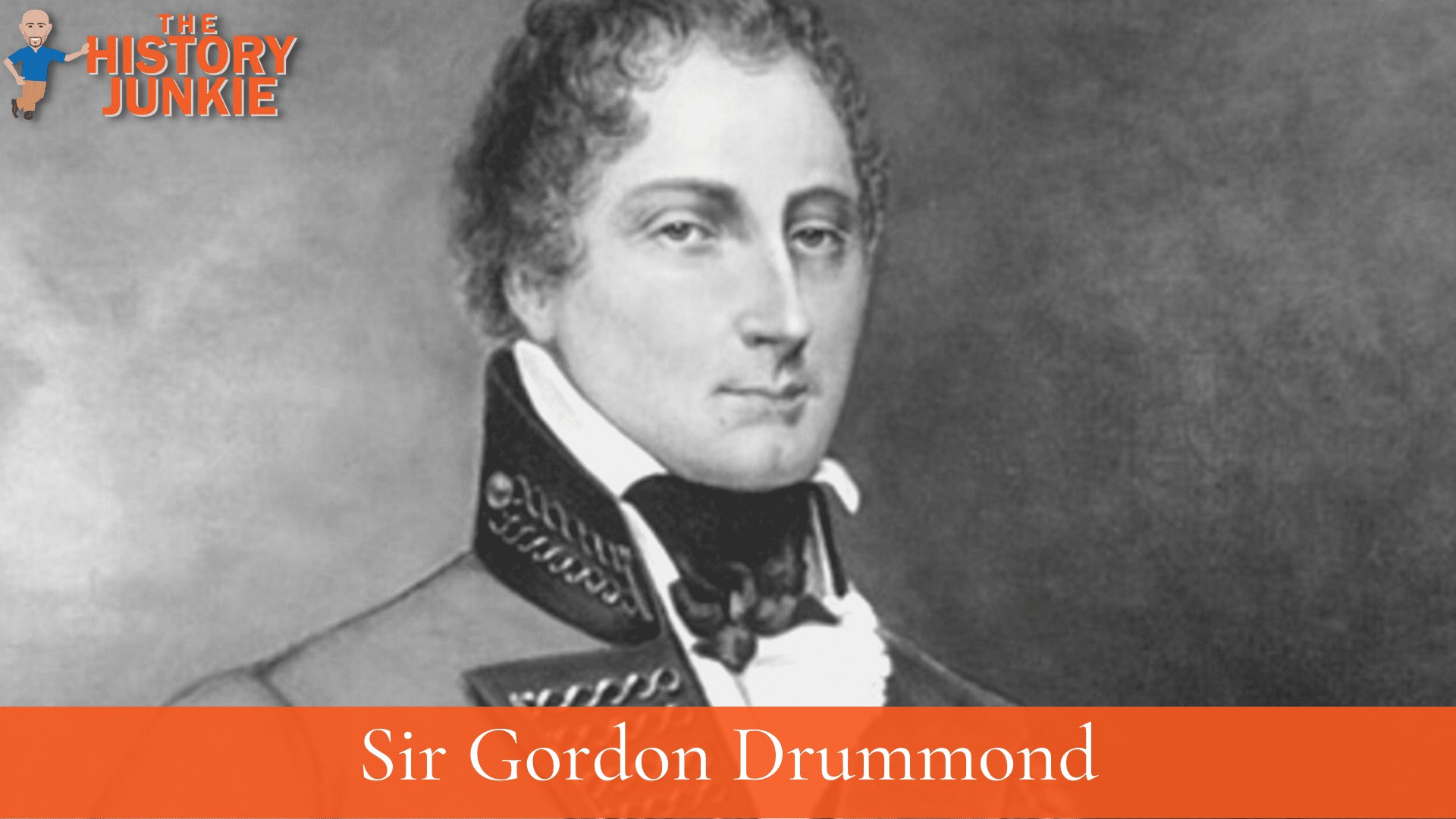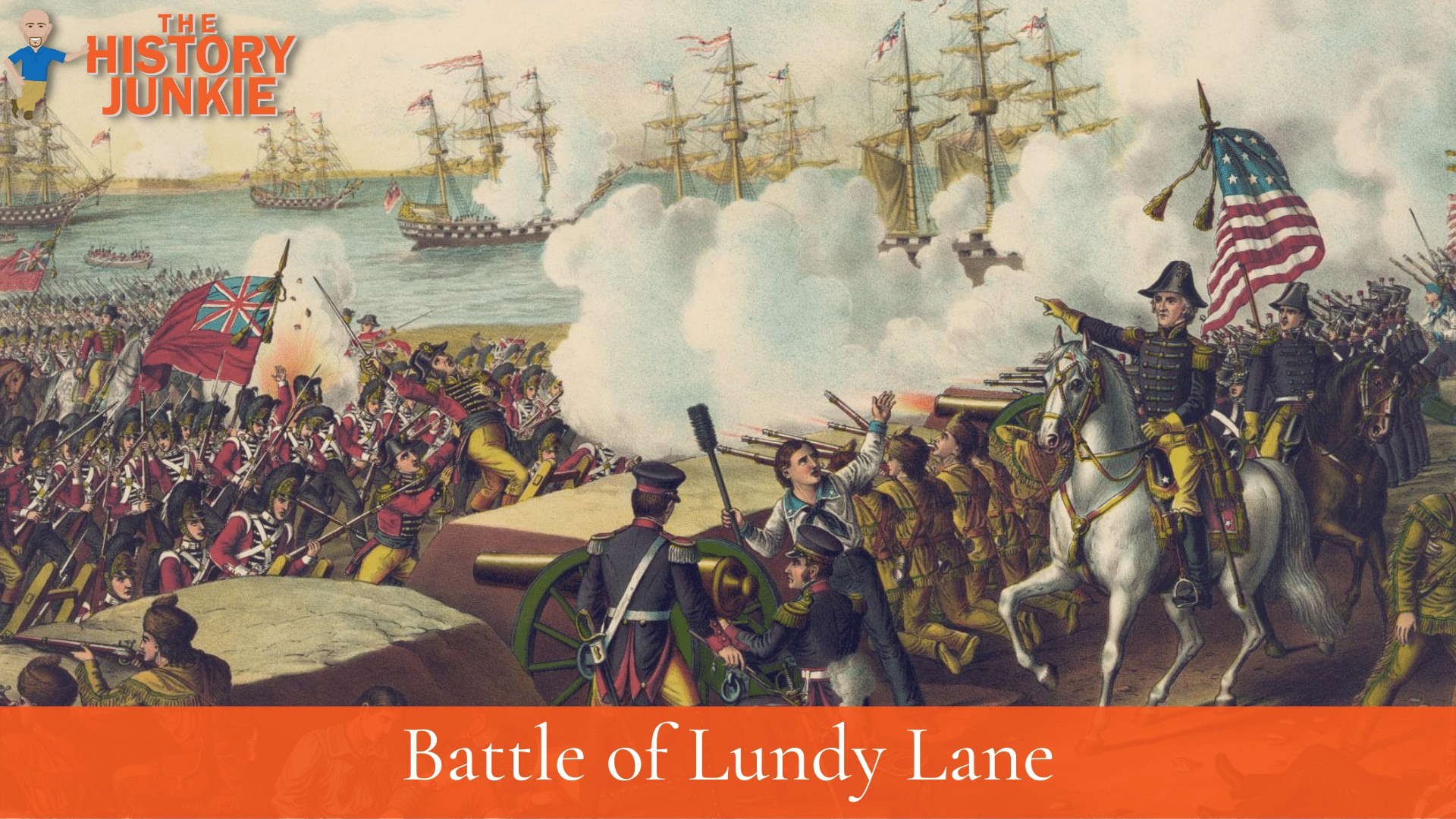Sir Gordon Drummond holds the honor of being the first Canadian-born officer to command the military and the civil government.

As Lieutenant Governor of Upper Canada, Drummond distinguished himself on the Niagara Front in the War of 1812 and later became Governor-General and Administrator of Canada.
Gordon Drummond had the distinction of being the first Canadian-born officer to take command in both the army and the civil government when he became administrator of Upper Canada late in 1813.
He was the fourth administrator of Ontario since the outbreak of war, having taken over from Roger Sheaffe's successor, Major General Francis Baron de Rottenburg.
By that time, Drummond's long service in the army had earned him the reputation of a talented officer with a natural eagerness tempered by sound judgment.
Early Years
Born in Quebec in 1772 and educated in England, Drummond rose rapidly through the military ranks after having joined the First Regiment of Foot, The Royal Scots.
He served as a junior lieutenant colonel under the Duke of York in the Netherlands in 1794 and rose to major general by 1805.
Before coming to North America, he served in the Mediterranean and the West Indies.
He was in Canada in the three years leading up to the war but was posted in Ireland when the conflict erupted. He was summoned to Canada late in 1813.
War of 1812
Drummond proved to be just the sort of determined commander that Prevost had been looking for. One of his first actions was to halt the flow of forces toward Lower Canada in order to maintain a strong presence in Upper Canada.
Recognizing the importance of the Niagara region, he followed up the recent reacquisition of Fort George with a surprise attack on Fort Niagara in December of 1813.
With this move, Drummond gained control of the mouth of the Niagara River, establishing a position that would work favorably for the British Army in the summer that followed.
As an administrator, Drummond was harsh on traitors but respectful of the general population, despite having to impose martial law to obtain from them the food to feed his army.
Taking Prevost to task on his word of making defensive measures paramount, Drummond demanded supplies to build new fortifications and reinforce existing ones.
He also pressured Prevost for as many reinforcements as possible. But Drummond was also open to pressuring the U.S. by means of the occasional surprise raid.
In July of 1814, Drummond moved up from York to support Phineas Riall at Fort George in the weeks following the British defeat at Chippawa.
Drummond arrived at the fort on July 25 and marched his troops, which included the Royal Scots and the King's, forward to join Riall's advance forces near Chippawa.

Drummond arrived just as Riall was preparing a retreat from Winfield Scott's battalions. Drummond ordered an immediate attack, and the small skirmish soon blossomed into a full-scale battle along a road called Lundy's Lane.
Despite a serious wound as a result of being shot through the neck, Drummond continued to direct this bloodiest of battles until its stalemate finale.
Drummond spent the weeks following Lundy's Lane laying siege to Fort Erie, where the Americans had sought refuge.
With the siege dragging on, Drummond devised a risky and complicated plan to storm the fort at night. This disastrous offensive ended with the loss of hundreds of British men when the fort's magazine exploded under them.
The siege was unsuccessful, but the Americans finally withdrew due to their own food shortages. Drummond then secured the area until winter, once again put an end to campaigning.
The Americans did not return.
Later Years
Immediately after the war, Drummond was made administrator of Lower Canada, replacing George Prevost, who had been recalled to England.
Drummond oversaw the transition to peace between the two countries before returning to Britain in 1816.
Shortly after his return to England, Drummond, on July 1, 1816, was raised to Knight Commander of the Grand Cross of the Order of the Bath, the first Canadian to receive this honor.
The investment ceremony was conducted by both the Prince Regent and Prince Frederick, Duke of York, and Albany, Commander-in-Chief of the British Army.
In 1825, Drummond was promoted to full general, and twenty years later became the most senior general in the British Army.
Despite his knighthood and promotion, as well as his continuing active duty status, he never saw action in battle again.
He was appointed colonel of the 88th Regiment of Foot (Connaught Rangers) on November 3, 1819, transferring to the 71st Regiment of Foot on January 16, 1824.
On September 21, 1829, he transferred again to the 49th Regiment of Foot and on April 24, 1846, to the 8th (The Kings) Regiment of Foot, serving in that capacity to his death.
Sir Gordon Drummond died on October 10, 1854, at his home in London at age 82.
